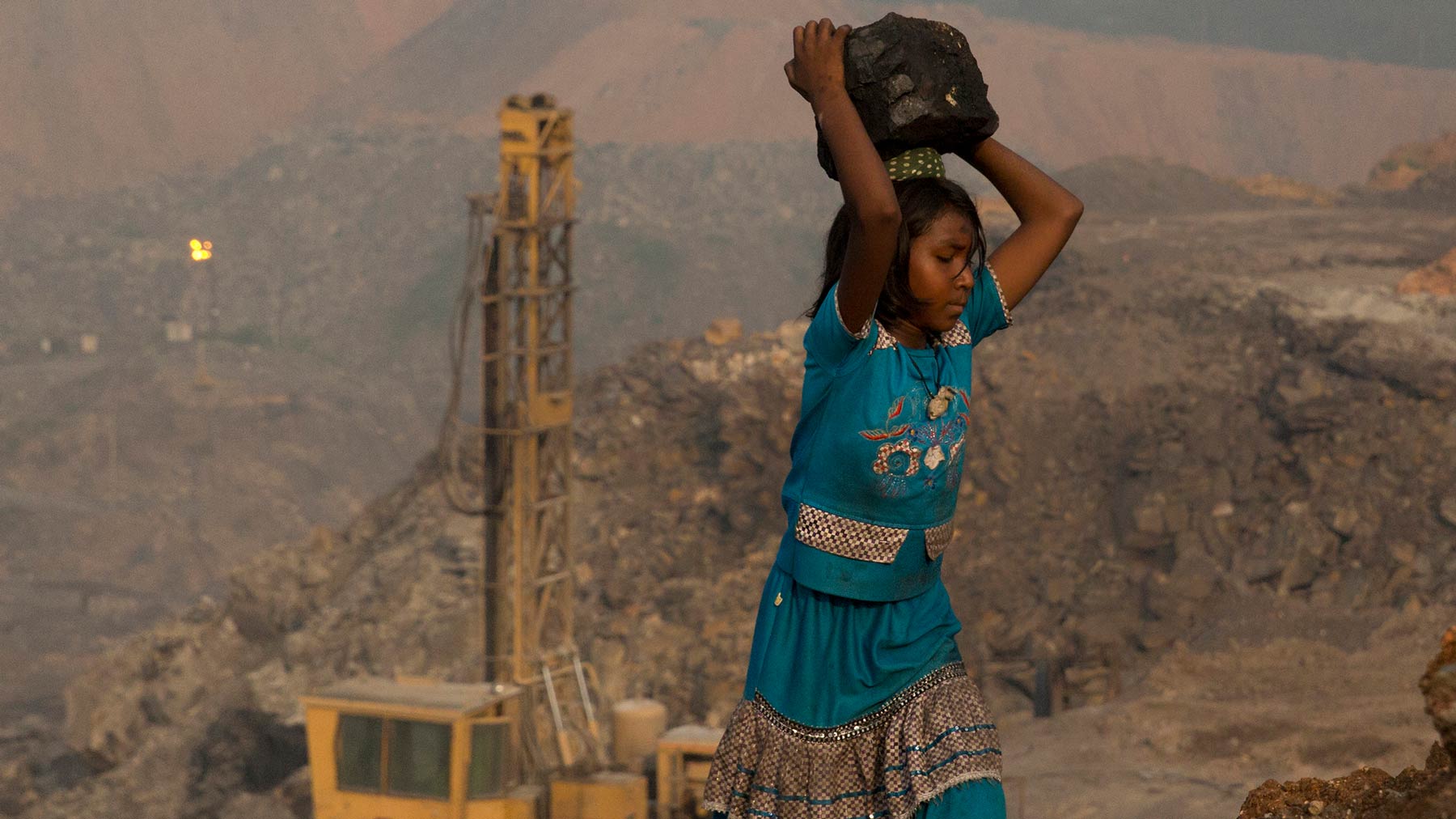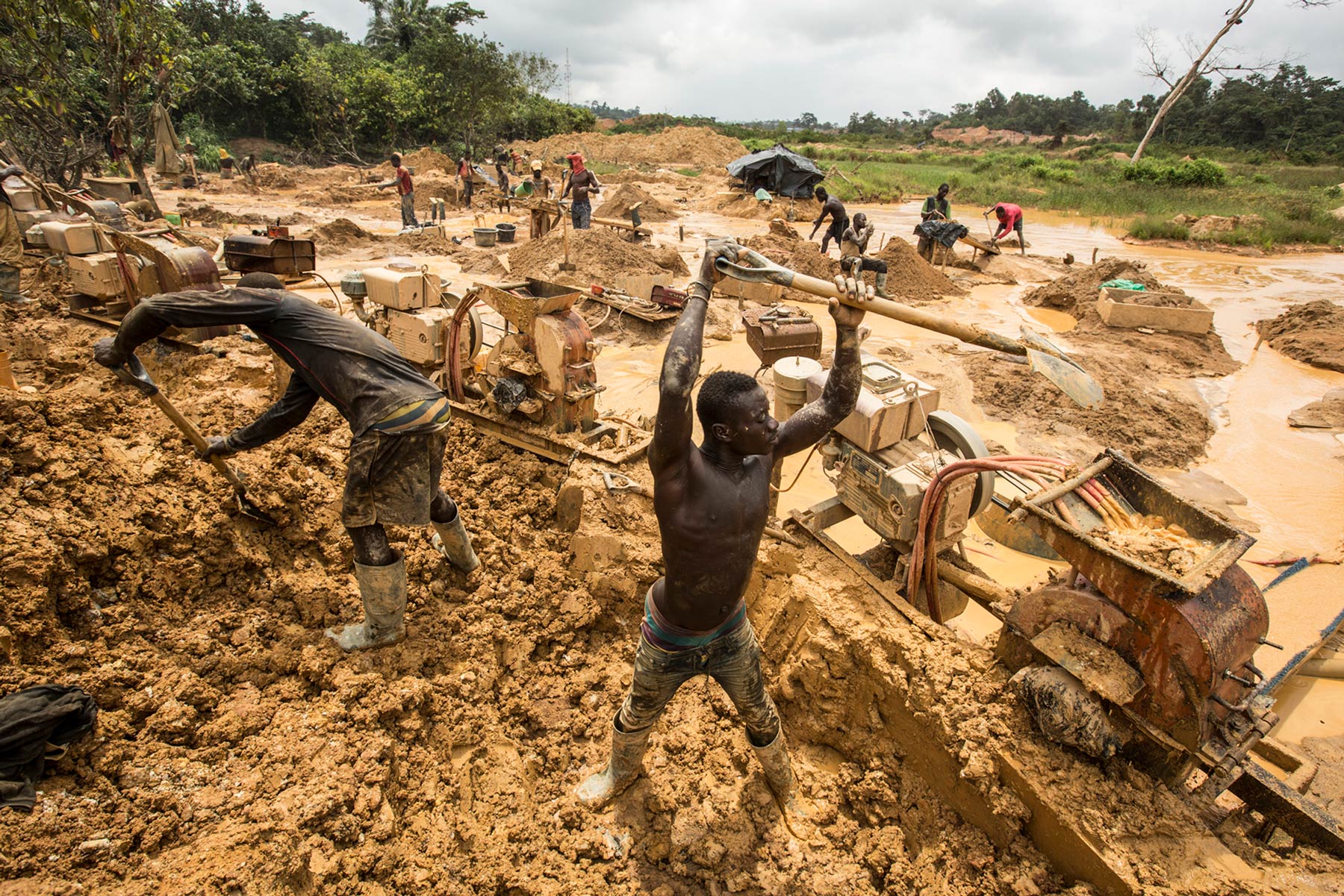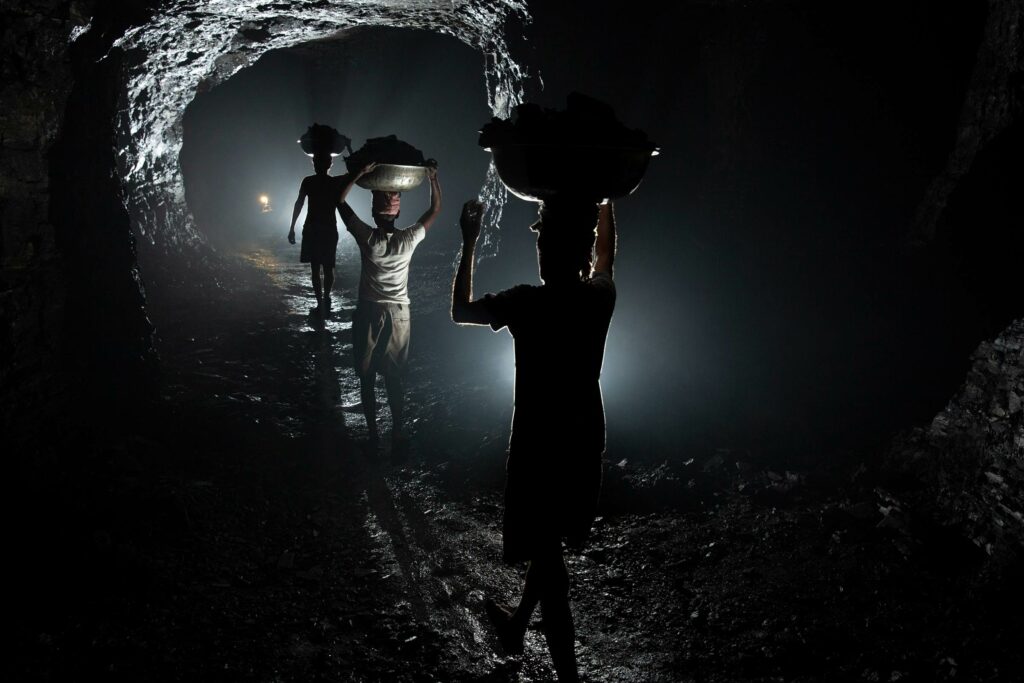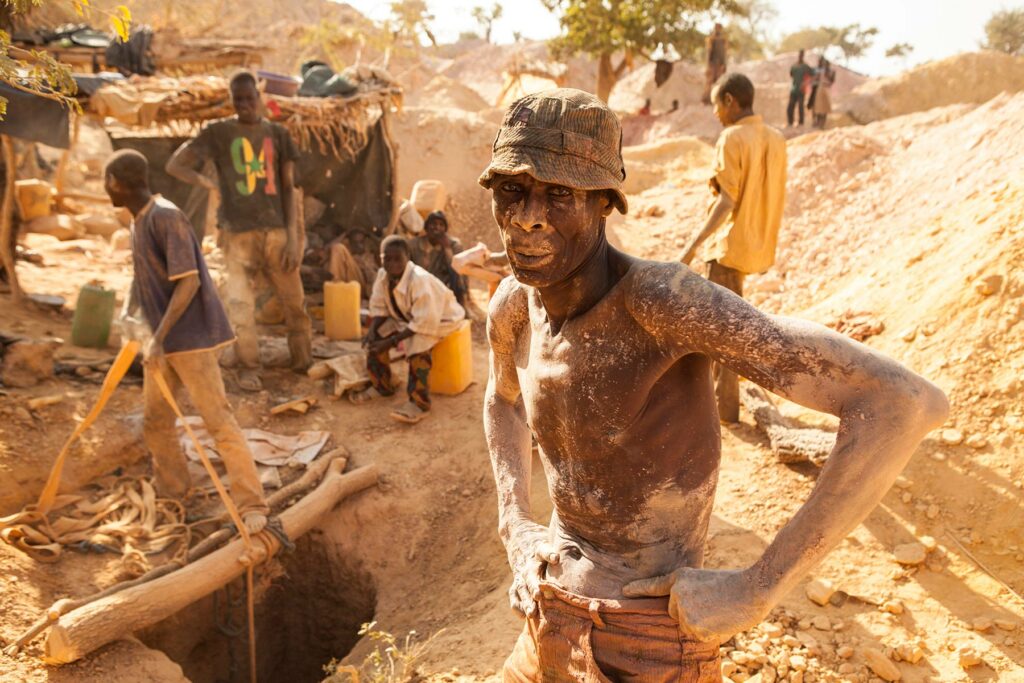ASM for the prospect of better lives for themselves and their families.

Guest Authors
View ProfileOther posts by
Guest Authors:
Reflections by Hugh Brown on ASM around the world
 Artisanal and small-scale mining (ASM) is not limited to the cobalt sector. Worldwide millions of men and women rely on ASM for their livelihood. Few people, if any, have visited a greater range and number of artisanal mine sites around the world than Hugh Brown – documentary photographer and ASM advocate. Through his photography and journalism, Hugh draws attention to the diversity and importance of ASM globally.
Artisanal and small-scale mining (ASM) is not limited to the cobalt sector. Worldwide millions of men and women rely on ASM for their livelihood. Few people, if any, have visited a greater range and number of artisanal mine sites around the world than Hugh Brown – documentary photographer and ASM advocate. Through his photography and journalism, Hugh draws attention to the diversity and importance of ASM globally.
We are excited that Hugh has agreed to join the FCA’s recently launched Advisory Board and was kind enough to agree to authoring this guest blog, sharing his perspective on the state and role of ASM across different commodities and geographies.

Coal Scavenger, India.
1. What is my experience working in ASM around the world?
My first encounter with artisanal and small-scale mining (ASM) was back in 2006. When things were not fashionable and then in 2010 I resolved to make a large format coffee table book on the subject. Since that time, I’ve travelled the world documenting the subject, working in some 30 countries and across many different commodities.
If I was asked to describe ASM I would say it’s diverse. Immensely diverse. And that there is no rule book as to how things operate in the space, because we’re dealing with some of the poorest people in the world and their manners of working evolve to suit market needs they identify. So, if it’s coloured gems for example, and they know where these can be found, they will learn of a market and their ability to serve that market will evolve over time. Same with safe practices and working styles. These people haven’t had the luxury of learning about mining best practices and nor do they have the financial means of doing so, so they develop working styles that enable them to get what the market is after while trying to stay alive in the process of doing so.
2. Where does it happen?
ASM happens in so many countries. And there are said to be about 40 million directly employed and a further 240 million indirectly reliant on the industry. That 280 million number equates to nearly four percent of the global population and over 10 percent of the working population in the Global South.

Artisanal Gold Mining, Ghana.
I saw a report the other day showing ASM happening in over 100 countries around the world. It almost always happens in low- and lower-middle-income countries because once given countries exceed a certain GDP per capita mechanisation takes over and the ASM crew can no longer compete. That said, ASM does also happen in developed economies. Just that we don’t call it ASM. Albeit that when it happens in the Global North it is nearly always on a much smaller scale and the motivations for the miners doing these activities are very different. There’s still the component of searching for that El Dorado very often but there is also the component of people liking the idea of having their own show and working alone. But ASM most certainly happens in my home country of Australia but also in places such as the United States and Canada and even Russia.
3. What are some of the commodities mined by artisanal miners?
I sat down the other day and listed some of the ASM commodities that I have come across in my work. The number is quite staggering. Things such as gold, silver, the three T’s (tin, tantalum and tungsten), copper, cobalt, coal, oil, coloured gems, manganese, mica, sand, aggregates (clays, crushed stone), sulphur, coral, mercury, iron ore, rare earths, even mammoth tusk. And some of these account for substantial proportions of the global output. Gold for example accounting for 20 percent of global production. The 3Ts around 25 percent. Cobalt more than 10 percent. Coloured gems accounts for a staggering 85 percent of global output. Not to mention the importance of some of these such as cobalt where ASM is a vital balancing agent when global markets slip out of equilibrium.
4. What are some of the differences associated with artisanal mining?
Not only are there so many differences in where artisanal mining takes place and in what is mined, but mining methods vary enormously. Much of this can be attributed to the fact that there is nowhere near the same amount of knowledge sharing as is the case with large-scale mining and so best practise methods have not yet evolved to be applied uniformly around the world. The rapid roll-out of internet and phone technology and the developing world is changing this to some degree but mining methods have traditionally evolved locally and in the context of the challenges unique to any given location.
So, think well in excess of 100 countries where artisanal mining takes place and then overlay that with so many different commodities and there clearly is no one size fits all approach to how artisanal mining takes place around the world. In northern Pakistan and Bolivia, I worked with some of the world’s highest altitude miners, and in the Pakistan situation for example, these miners could only work for three months of the year due to their water supply freezing up and the risk of avalanche becoming too great. Still elsewhere in that same range, miners would mine in the winter months and then move to higher altitudes to graze stock in the summer months. My point being that even within the same regions of a single country mining methods and times of year vary so greatly.

Underground artisanal coal miners, India
Russia is another interesting example. It being a country that most don’t associate with artisanal mining. But it is there. And one of the most interesting examples I’ve come across is the mammoth tusk hunters of the Siberian Arctic. Again, mammoth tusk there being mined in so many different ways. Most of it is alluvial and is done there in summer using high-pressure hoses. But there is a small cohort – which includes a number of friends of mine – that dive for the mammoth tusk below the ice in winter where temperatures throughout these parts can fall below minus 70 degrees Celsius.
Yet another interesting example I’ve come across occurs in Cameroon – it also happens in India and other parts – where local men dive for sand for use in the local building and construction industries. They dive twice daily around the bottom of the tide and battle unique challenges that include venomous snakes, the risk of being washed out to sea on the fast-running tide. I was fortunate to work with the strongest crew on that section of river and my friend Simon’s crew were bringing up an average of 1.7 tonnes of sand per person in a three and a half hour diving slot.
5. What things don’t I understand about the debate in ASM?
We live in a world where things seem to be more disconnected than ever. Despite the proliferation of technology in recent years. And insofar as that relates to ASM that equates to a lack of understanding of the complexities and workings of faraway places. Which then translates into click-bait and ill-informed reporting of the industry in the mainstream media. Something that frustrates and saddens the hell out of me. Criticisms seemingly directed mostly at concerns with children working in the mines and poor safety and mining practices and the assumption that most miners are being treated as slaves and are forced to work in these environments.
The reality could not be further from the case. Most of the miners I have worked with in this space around the world have made the active choice to be doing this line of work. They haven’t been forced. They’ve chosen this path because it pays better than work in the fields and the farms and the villages. They’ve chosen to sacrifice the lives they could be living now for the prospect of better lives for themselves and their families. So, think a better house or the opportunity to buy a motor vehicle or motor bike and to give their children a better start in life than the ones that they had.
And when things are all paired back that’s not so different to how our own societies function in the developed world. In my home country of Australia for example, many people choose to work in mines far away from their homes. They sacrifice time with their families, do work that many don’t enjoy, and work long 84-hour weeks during their time away. Not so many do this for their love of their work. The majority do it for the same reasons as the artisanal miners I photograph. To create better futures for themselves and their partners and their families. Same with cleaners working long hours or labourers on an inner-city building site. They are all sacrificing the lives they could be living now for the prospect of better lives. They are all miners at heart as well.
6. So am I saying that ASM is Perfect?
I’m not for a minute asserting that ASM is perfect, but one thing we need to be hugely careful of is not seeking to overlay western standards of doing things with what happens elsewhere in the world. The perspectives being completely different. And it is totally unfair for us to apply our western values – which most would acknowledge are far from perfect – onto those with nothing. To judge from the top of Maslow’s Hierarchy of Needs pyramid on what the world’s poorest – the ones at the bottom of the pyramid – should and should not be worrying about.
The complexity of ASM is only surpassed by the complexity of the decision-makers that seek to impose change on the industry. And one of my biggest criticisms of the sector is that there is zero unanimity in terms of defining what success looks like within the sector. There are so many players in the space and the objectives of all of those players vary enormously. Some objectives are transparent. Others are not. No-one truly knows what success means and I feel personally that the miners themselves are getting a raw deal as a result. With very little representation among those that congregate to make decisions about them. Decisions that impact their livelihoods.

Artisanal Sand Diver, Cameroon
I also have an issue with the singling out of the cobalt sector in the global debate about concerns with artisanal mining. For example, why has this become one of the catalyst supply chains in arguing for change in global ASM? The last time I looked there were around 150,000 people mining artisanally in this sector in the Congo who accounted for more than 10 percent of global cobalt production. That’s 150,000 people out of a total of 40 million people employed directly in ASM around the world. That’s 0.375 percent of the world’s total ASM population employed in cobalt. And this despite the fact that the issues of children and safety practices are no more severe than in the many, many other countries in which these same issues apply around the world.
I’m asserting that cobalt is a catalyst mineral driving the debate for reform because others see it as a pinch point in the electric vehicle supply chain. You slow the access to cobalt and you stand to slow the uptake of electric vehicles. And it doesn’t take much to work out who might stand to benefit from such a process….
7. So, what is the Solution?
The solution to the challenges facing ASM is not to abandon the sector. There are too many lives that depend on this activity to just dump them out on the street. Too many lives that depend on this activity to feed themselves and their families. And there are too many of us that depend on these people also. For we all own metals and/or precious stones that were produced by artisanal miners whether they be in our smart phones, laptops, electric vehicles or jewellery.

Artisanal Gold Miner, Burkina Faso.
I’ve recently joined the Fair Cobalt Alliance Advisory Board and I did so for their focus on trigger points that I see as being critical to improvement in the sector. ASM is not going anywhere any time soon, so we can either choose to work with it or not at all. The latter not being an option given the dependence of global supply chains on the ASM contribution and the sheer weight of people that the sector employs. Because if we dump these people out on the street all other sorts of problems accrue.
At the moment I see lots of chiding of the artisanal mining sector by people forgetting and conveniently overlooking the problems in our own backyards. And it is not merely as simple as phasing out ASM in favour of large-scale mining. Large-scale mining accounts for over 90 percent of global metals production and employs seven million people. ASM accounts for the remainder and employs 40 million people. It’s not as simple as migrating the ASMs across to the large-scale sector because the numbers simply don’t work.
Bringing ASM up to western standards of doing things will take time. Safety and training systems will need to be standardised and modified to account for condition specific factors and then these systems must become self-sustaining. It is not as simply as giving someone a pair of safety boots and a helmet, glasses and high vis and assuming everything will be okay. Systems of enforcement and replacement will be required. And then years will be required to bring individual mining standards up to those of the developed world. Things that we send people off to university to learn. The same too for issues of environment, an area where we westerners are not as proficient as we’d like to make out.
The same also for things such as management of children out of the mining environment, and note how I did not use the term child labour. The presence of children in and around mine sites is a far more complex than the two-minute sound-byte western media would all have us believe. Many children in places such as Africa are a quasi-superannuation form for their parents who have large families to provide for themselves when they are no longer able to work. So, children have to work from a young age very often just to ensure they stay fed. Not ideal, but the local reality they were born into. Creative ways will need to be found to incentivise kids being in school rather than staying with their parents to assist the family unit around the mines.
There are so many things to address if we are to work on bringing up the ASM sector to western standards. This is going to take a lot of time and a lot of patience and a lot of resources. But we owe it to those of the world’s poorest to stand with them. For the entire ride.
To learn more about and support Hugh’s work visit his website. We also recommend following Hugh on LinkedIn where he regularly shares some of his photography and thoughts.


